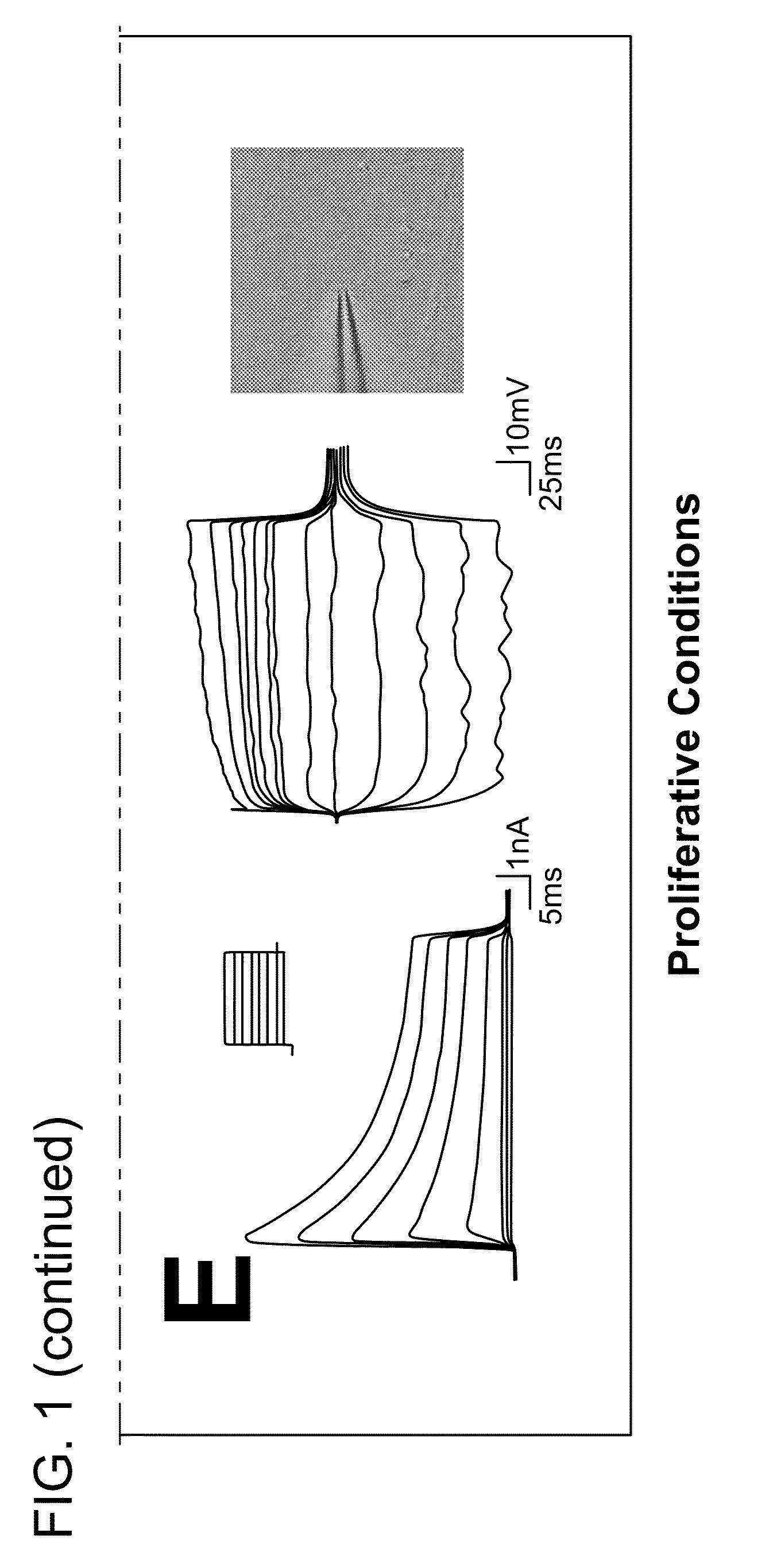Culturing and differentiating neural precursor cells
a neural precursor and cell technology, applied in the field of development biology, neuroscience, stem cells, regenerative medicine, etc., can solve the problems of inability to achieve large-scale use of cells, inability to identify individual stem cells, and difficulty in isolation of neural stem cells,
- Summary
- Abstract
- Description
- Claims
- Application Information
AI Technical Summary
Benefits of technology
Problems solved by technology
Method used
Image
Examples
example 1
Material and Methods
[0101]The following materials and methods were used in Examples 2-7 described below.
[0102]Isolation of SVZ cells. C57 / B6 mice (Jackson Laboratories, Bar Harbor, Minn.) and age- and sex-matched transgenic mice expressing nestin-GFP (J. L. Mignone, V. Kukekov, A. S. Chiang, D. Steindler, G. Enikolopov, J Comp Neurol 469, 311, 2004) were housed under standard conditions. To obtain SVZ cells, 8 day-old (P8) and adult (>90 days-old) animals were decapitated and their brains removed and placed in DMEM / F-12 (DF, Invitrogen, Carlsbad, Calif., Cat No. 11320-033) containing 20 mg / ml penicillin, 20 mg / ml streptomycin, and 25 ng / ml amphotericin B (collectively, “antibiotics”). The lateral ventricles were exposed via coronal sectioning, and the surrounding tissue was microdissected from brain slices. Under aseptic conditions, extracted tissues of five animals were pooled, placed in Dulbecco's phosphate-buffered saline (PBS), and manually dissociated into 1 mm3 pieces.
[0103]Ti...
example 2
Stage I of In Vitro Neurogenesis: Characterization of Cells Under Proliferative Conditions
[0119]This example describes characteristics of cells that appear in SVZ cultures maintained under proliferative conditions as described in the Methods above.
[0120]Cells were harvested as described from a neurogenic brain region known to harbor stem cells, i.e., the subventricular zone (SVZ) of the lateral ventricle. Single cell suspensions of the microdissected mouse brain tissue were then used for identification of characteristic events of SVZ neurogenesis in vitro.
[0121]To minimize the presence of more mature SVZ phenotypes and to expand the putative stem cell population at the same time, SVZ cultures were passaged twice before experimentation (representing approximately 5 population doublings) in media known to maintain and promote proliferation of neural stem cells. As described above, media supplements included epidermal growth factor (EGF), basic fibroblast growth factor (bFGF), serum, a...
example 3
Stage I of In Vitro Neurogenesis: Characterization of SVZ Progenitor Cells (“Phase Dark” Cells)
[0125]The simultaneous removal of FGF, EGF and serum from proliferating cultures of postnatal day 8 (P8) and adult (>90 days old) SVZ reliably induced the appearance of defined colonies of 10 to 100 phase dark cells 4 days later (FIG. 1F). This phenomenon was not observed during proliferation of SVZ cells, consistent with the finding that EGF arrests cell differentiation (Doetsch F. et al., Neuron 36:1021, 2002). Identically cultured parietal neocortex cells did not yield phase dark clusters, nor did SVZ cells propagated in medium lacking growth factors.
[0126]Phase dark cells were GFAP− and A2B5−, yet expressed nestin and β-III tubulin. Referring to FIG. 1G, many of these cells also expressed both Dlx-2 and PSA-NCAM. In close proximity to these cells were other clusters of cells that were positive for Dlx-2 but negative for PSA-NCAM.
[0127]As seen in FIG. 1H, ultrastructural investigation r...
PUM
| Property | Measurement | Unit |
|---|---|---|
| pH | aaaaa | aaaaa |
| concentrations | aaaaa | aaaaa |
| concentrations | aaaaa | aaaaa |
Abstract
Description
Claims
Application Information
 Login to View More
Login to View More - R&D
- Intellectual Property
- Life Sciences
- Materials
- Tech Scout
- Unparalleled Data Quality
- Higher Quality Content
- 60% Fewer Hallucinations
Browse by: Latest US Patents, China's latest patents, Technical Efficacy Thesaurus, Application Domain, Technology Topic, Popular Technical Reports.
© 2025 PatSnap. All rights reserved.Legal|Privacy policy|Modern Slavery Act Transparency Statement|Sitemap|About US| Contact US: help@patsnap.com



